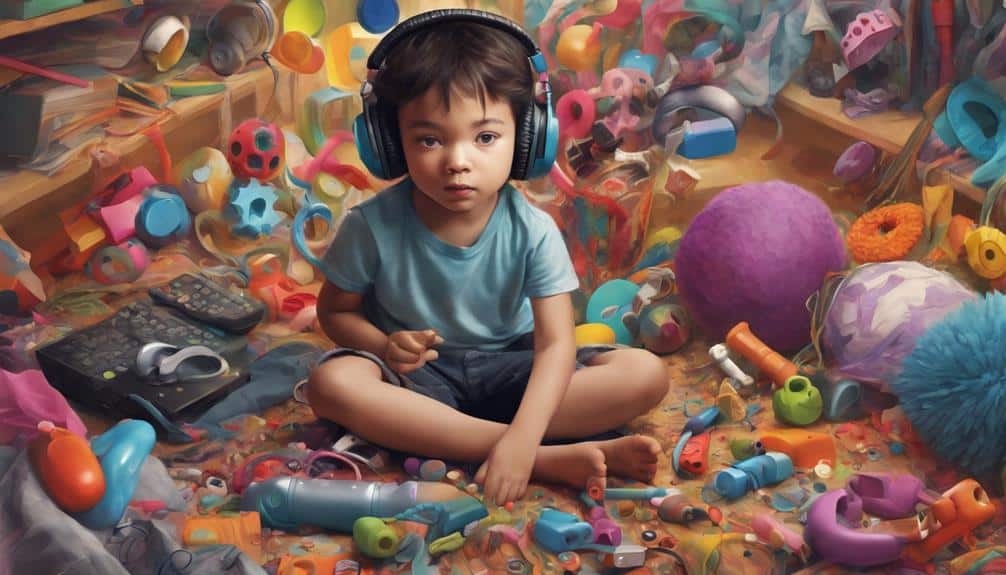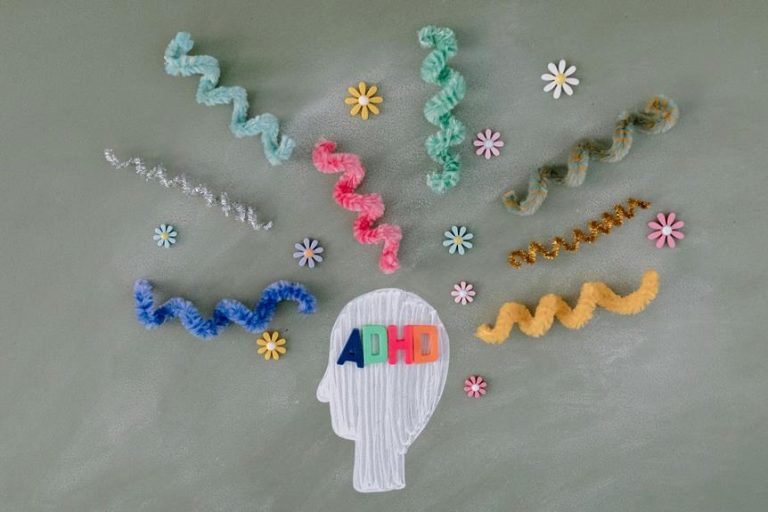Books About Sensory Processing Disorder
Exploring the world of sensory processing disorder is like deciphering an intricate puzzle; each piece essential to understanding the bigger picture. From investigating sensory differences to practical solutions, books on SPD offer a wealth of knowledge and support.
But what makes these books truly invaluable is not just the information they provide, but the potential they hold to transform how we perceive and interact with individuals facing sensory challenges. Whether you're a parent, therapist, or someone curious to learn more, these resources offer a unique perspective that can truly make a difference in how we approach and support those with SPD.
Key Takeaways
- Gain practical guidance on SPD impacts and strategies for sensory processing challenges.
- Access essential books for detailed understanding and practical applications in sensory integration field.
- Find valuable insights and strategies for supporting children with sensory needs.
- Empower parents with tangible interventions and strategies for effective sensory processing disorder management.
Overview of Sensory Processing Disorder Books

What makes books about Sensory Processing Disorder invaluable resources for parents seeking to understand and support children with sensory challenges?
These books offer practical guidance and insights into how SPD impacts a child's sensory processing, behavior, and emotional regulation. They serve as a valuable resource for parents looking to navigate the complexities of their child's sensory needs.
By delving into sensory integration theory and practices, these books equip parents with the knowledge to better support their children. Additionally, some books provide hands-on activities and strategies recommended by Occupational Therapists to aid children in managing their sensory issues effectively.
For parents, these books offer a roadmap on advocating for their child in school settings, interpreting sensory signals, and implementing interventions tailored to their child's specific sensory requirements. By understanding the principles behind sensory processing, parents can create a supportive environment that fosters their child's development and well-being.
Ultimately, these resources empower parents with the tools needed to navigate the challenges of raising children with Sensory Processing Disorder.
Sensory Integration and the Child

Exploring the foundational concepts of sensory integration in children, 'Sensory Integration and the Child' by Dr. Jean Ayres serves as a thorough guide for understanding the intricate connection between sensory processing and Praxis. This seminal book by Ayres, a pioneering occupational therapist, is a must-read for professionals seeking to investigate deeper into sensory integration therapy and its implications for children with sensory processing challenges.
- Dr. Jean Ayres is a renowned figure in the field of sensory integration, offering valuable insights into understanding sensory processing disorders.
- Occupational therapists find 'Sensory Integration and the Child' essential for gaining a detailed understanding of sensory integration concepts.
- The book's clear and accessible language makes complex concepts surrounding sensory processing and Praxis easily digestible.
- It highlights the critical role sensory processing plays in the development of children, particularly those with autism or who are sensory-sensitive.
- Professionals engaging in CLASI training often refer to this book to deepen their knowledge of sensory integration therapy and its practical applications.
Sensational Kids by Lucy Jean Miller

Delving into sensory processing insights and strategies, 'Sensational Kids' by Lucy Jean Miller offers a thorough understanding of supporting children with sensory needs. This book is a valuable resource for parents, educators, and occupational therapy students seeking to explain sensory processing differences in children.
Miller emphasizes the importance of using terms like sensory processing differences to create a more inclusive and positive dialogue around sensory sensitivity. While 'Sensational Kids' isn't a diagnostic manual, it provides practical strategies and approaches for helping children navigate sensory challenges.
Raising a Sensory Smart Child

Providing essential guidance for parents of children with sensory processing disorders, 'Raising a Sensory Smart Child' by Carol Stock offers practical insights into sensory integration and effective parenting strategies. This book equips parents with the tools needed to understand and address their child's sensory challenges smartly. Here are some key points from the book:
- Empowers parents to advocate for their child's sensory needs in various environments.
- Provides practical solutions for helping your child navigate sensory processing issues.
- Offers a thorough understanding of your child's sensory signals.
- Shares strategies for supporting children with sensory processing challenges.
- Guides parents in implementing effective parenting approaches tailored to their child's unique sensory needs.
'Raising a Sensory Smart Child' is a valuable resource that enables parents to navigate the complexities of sensory processing disorders confidently. Through this book, parents can gain a deeper understanding of their child's sensory world and learn how to create a supportive environment for their development.
Understanding Your Child's Sensory Signals

Understanding your child's sensory signals can be a challenging yet rewarding journey as you learn to comprehend and respond effectively to their unique needs.
In Angie Voss OTR's book, 'Understanding Your Child's Sensory Signals,' tangible interventions based on common sensory cues are provided to aid in reducing irritation and increasing empathy towards children's sensory needs. This resource equips parents with practical strategies for everyday challenges like bathtime and nail cutting.
By emphasizing the proactive use of regulation strategies, caregivers can better support their child's sensory processing requirements. The book offers valuable insights into interpreting sensory cues and understanding the child's signals, enabling more effective intervention tailored to the child's specific sensory needs.
The Out-of-Sync Child

'The Out-of-Sync Child' by Carol Stock Kranowitz offers valuable insights into sensory processing disorders, providing practical strategies for parents and professionals coping with challenges related to sensory processing differences. This book has been a guiding light for many managing the complexities of raising a child with sensory processing issues.
Here are some key points about 'The Out-of-Sync Child':
- Clear Explanations: Kranowitz breaks down sensory processing issues in a way that's easy to understand, helping readers grasp complex concepts.
- Practical Solutions: The book offers practical solutions for daily challenges faced by children with sensory processing differences, empowering caregivers and educators.
- Positive Reviews: 'The Out-of-Sync Child' has received glowing reviews, establishing itself as one of the best books on raising a sensory smart child.
- Increased Awareness: Carol Stock Kranowitz's work has played a significant role in increasing awareness and understanding of sensory processing disorders among parents and caregivers.
- Recommended Resource: It's often recommended as a valuable resource for parents of children with SPD or special needs, providing much-needed support and guidance in their journey.
Frequently Asked Questions
What Are the 4 Types of Sensory Processing Disorder?
The four types of sensory processing disorder include sensory modulation disorder (over-responsivity, under-responsivity, sensory seeking), sensory discrimination disorder, sensory-based motor disorder. These conditions impact sensory processing, leading to varied challenges in sensory experiences and integration.
What Are 3 Patterns of Sensory Processing Disorders?
Understanding sensory processing disorders involves recognizing sensory modulation issues like sensory overload or seeking, sensory sensitivity or discrimination challenges, and sensory modulation difficulties. Tailoring interventions to address these specific patterns is essential for supporting individuals effectively.
What Is the Best Treatment for Sensory Processing Disorder?
Sensory integration through occupational therapy, combined with a personalized sensory diet and behavioral therapy, is important in managing sensory processing disorder. Parent education and early intervention play essential roles, enhancing sensory modulation and overall well-being.
Do Children Outgrow Sensory Processing Disorder?
Yes, children can outgrow sensory processing disorder. Early intervention, parental support, coping strategies, school accommodations, occupational therapy, sensory diets, and understanding sensory triggers can help manage long-term effects and social challenges, leading to improved sensory processing skills.
Conclusion
In a world where sensory processing disorder can feel like sailing a stormy sea, these books are like beacons of light, guiding us towards understanding and empowerment. They offer a lifeline of knowledge and practical strategies to help us navigate the challenges and embrace the unique strengths of individuals with SPD.
Let these books be your compass, leading you on a journey of compassion, education, and support in the beautiful yet sometimes turbulent waters of sensory processing differences.







